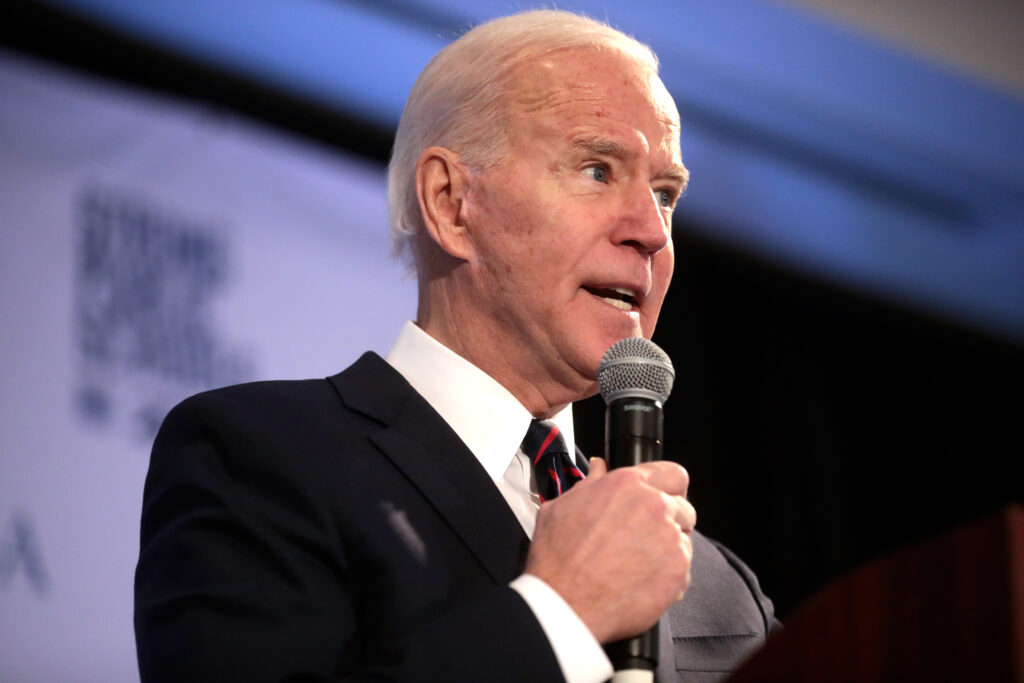Things in Washington get weirder by the day. It reminds me of a bunch of toddlers playing in the sand box. They move their toys around haphazardly–let’s put the health IT truck over here, and the comparative effectiveness tractor over there, and the mandatory coverage wagon right here, then we’ll have the tax increase dinosaur come and smash it all. Cool!
It would be nice if they actually paid attention to what works, rather than focusing on fantasy scenarios and whimsical solutions. I had an op-ed published in the Boston Herald this week that explained how, instead of hoping for unproven remedies, policy makers should embrace the one approach that is achieving everything they have hoped to achieve for at least 40 years: consumer-driven health care. It is lowering costs, reducing trends, improving health, and creating patient awareness and cost consciousness.
But, alas, when you live in the Disneyland that is Washington, it is hard to be realistic about anything.
— Greg Scandlen
IN THIS ISSUE
$1 Trillion to Cover 16 Million Uninsured?
 The Congressional Budget Office (CBO) and Joint Committee on Taxation (JCT) took a lot of wind out of a lot of sails when they released a score of the Senate HELP proposal. They estimated Senator Kennedy’s draft would add $1 trillion to the deficit over 10 years and decrease the number of uninsured by only 16 million.
The Congressional Budget Office (CBO) and Joint Committee on Taxation (JCT) took a lot of wind out of a lot of sails when they released a score of the Senate HELP proposal. They estimated Senator Kennedy’s draft would add $1 trillion to the deficit over 10 years and decrease the number of uninsured by only 16 million.
Keep in mind, this is money added to the deficit because the federal government has no real money to spend. Every penny of new spending has to be borrowed from … well, who knows? That means interest has to be paid on it, and it has to be paid back at some time, by … well, who knows? Also, this is new money added to an already-bloated health care system.
Further, CBO/JCT have barely scratched the surface of this one proposal. This is only an estimate of the cost of the subsidies provided to people from 150 percent to 500 percent of poverty. And even then it does not estimate the cost of the enriched benefits for this coverage, such as:
- covering “children” to the age of 27,
- eliminating any annual or lifetime maximums,
- any benefit enhancements required by the new “Medical Advisory Council,” and
- the added costs of minimum loss ratios, community rating, and administration related to policing provider behavior.
It also does not estimate the added cost of putting all people up to 150 percent of poverty on Medicaid, or of the massive administrative costs of setting up and running “gateways,” conducting “risk adjustment” programs, or enforcing mandates.
SOURCE: Congressional Budget Office
More Like $4 Trillion
Steve Parente and his colleagues at Health Systems Innovations did score these other items and came up with a 10-year cost of $4 trillion, including $460 billion in new spending in 2010 alone. They assume the mandates and coverage expansions will actually work and 99 percent of the population will be covered.
SOURCE: Health Systems Innovations
Don’t Confuse Me with the Facts
 Of course, advocates of Big Government hate this stuff. Writing in Politico, Princeton history professor Julian Zelizar says the CBO is “the most potent threat to the Obama administration’s fledgling health care plan.” He adds, “if the long-term CBO cost estimates climb too high, Republicans might be able to prevent Democrats from using the budget reconciliation process to protect health care from a filibuster in the fall.” But he recommends the president ignore all such gloom and doom: “Obama can’t get trapped into a dry debate that is just about the numbers. Whatever form his final proposal takes, his best bet will be to keep public attention focused on the major objectives behind health care reform.”
Of course, advocates of Big Government hate this stuff. Writing in Politico, Princeton history professor Julian Zelizar says the CBO is “the most potent threat to the Obama administration’s fledgling health care plan.” He adds, “if the long-term CBO cost estimates climb too high, Republicans might be able to prevent Democrats from using the budget reconciliation process to protect health care from a filibuster in the fall.” But he recommends the president ignore all such gloom and doom: “Obama can’t get trapped into a dry debate that is just about the numbers. Whatever form his final proposal takes, his best bet will be to keep public attention focused on the major objectives behind health care reform.”
That’s the ticket–just keep whistling past the graveyard.
SOURCE: Politico
Jonathan Cohn Is Worried
This is all worrying the Big Government crowd. Writing on his New Republic blog, Jonathan Cohn says, “Attention fellow liberals who want health care reform: You are in danger of losing the fight for universal health insurance. And it’s not only–or even primarily–because of the public plan. It’s because of the money.”
He cites the two estimates from CBO, that the Finance Committee bill would lower the uninsured by two-thirds and cost $1.6 trillion and the HELP bill would lower the uninsured by one-third and cost $1 trillion, and the reaction from Senate Dems that the price has to be lowered. “This is a problem,” says Mr. Cohn. “My suspicion–based on what I’ve heard and seen over the last few months–is that knocking the price tag all the way down to $1 trillion will mean a lot less money to subsidize insurance for people who can’t afford it and far fewer guarantees that insurance would be adequate.”
He figures paying for all this should be easy–raise taxes, pay providers less, and damn the consequences.
SOURCE: The New Republic Blog
So Is Ezra Klein
In his Washington Post blog, Mr. Klein writes, “Health reform is, I think it fair to say, in danger right now. The news out of the Senate Health, Education, Labor, and Pensions Committee was bad. The Congressional Budget Office had scored a partial bill and the result was a total fiasco. But the news out of the Finance Committee is much, much worse.”
Like Mr. Cohn, Mr. Klein figures these estimates shouldn’t be an obstacle, because the answer is more reform, not less–putting everyone in a public plan, or passing a new Value Added Tax (VAT), or completely ending the employer exclusion. But alas, “The hope that we could expand the current system while holding costs down appears to have been just that: a hope. And CBO doesn’t score hopes. It only scores plans.”
Don’t you hate it when that happens? After all, we elected a president on nothing more than hope, why can’t we enact health reform on the same basis?
SOURCE: Washington Post Blog
Falling into the VAT
 David Hogberg writes in Investor’s Business Daily, “Democratic lawmakers, scrambling to find a way to finance a trillion-dollar expansion of government health care, are mulling the creation of a value-added tax.” He says, “A VAT would be a major headache for President Obama, who has consistently pledged not to raise taxes on 95% of Americans. Republicans are sure to portray a VAT as a violation of his vow.”
David Hogberg writes in Investor’s Business Daily, “Democratic lawmakers, scrambling to find a way to finance a trillion-dollar expansion of government health care, are mulling the creation of a value-added tax.” He says, “A VAT would be a major headache for President Obama, who has consistently pledged not to raise taxes on 95% of Americans. Republicans are sure to portray a VAT as a violation of his vow.”
He goes on to cite the National Association of Manufacturers and the national Retain Federation as being extremely concerned about imposition of a new federal sales tax, especially in this economy, because it would further depress consumer spending. He writes, “Both groups voice support for the idea of health care reform, but have opposed specific components, including an employer mandate and a public plan.”
Mr. Hogberg goes on to say, “the fact that Democrats are even considering the idea reflects a growing concern about health reform’s cost.” Plus, “Public opinion may be souring. A new N.Y. Times/CBS poll shows only 44% approve of Obama’s handling of health care vs. 34% who disapprove.”
The article concludes, “Democrats could try to pass health care reform that isn’t fully financed. But they need a deficit-neutral bill to be able to use budget reconciliation to allow Senate passage with 51 votes. Otherwise, they would need 60 votes to overcome any GOP-led filibuster.”
SOURCE: Investor’s Business Daily
But, Be Careful
The Associated Press reports, “Majority Democrats running the Finance Committee have told lobbyists that their views will be taken into account as long as their groups don’t mount public campaigns against the legislation.” Ooooops! There goes that “seat at the table” again–we will listen to (and ignore) what you have to so as long as you shut up in public.
Will it work to silence the interest groups? The article reports, “‘We have a lot of sweat equity in this process,’ said E. Neil Trautwein, chief health care lobbyist for the National Retail Federation, referring to hundreds of hours his group has spent with lawmakers as they prepared legislation. He predicted the bill would prove too costly and force lawmakers to pare it down–or else. ‘We need cost relief,’ he said. ‘But if comes to the point where we have to cut and run and build a coalition’ to oppose the bill, ‘we’ll take that step.'”
On the other hand, the AMA is more compliant–“The American Medical Association backed off from a confrontation with the Obama administration over a government-run plan to compete with private insurance, declining to take a firm position at a Chicago meeting Wednesday.”
SOURCE: Associated Press
To the Rescue?
Meanwhile, writing for Bloomberg, Edwin Chen says, “Former Senate majority leaders, including Democrat Tom Daschle and Republican Robert Dole (along with Howard Baker), are promoting a health care overhaul plan aimed at bridging differences between the two political parties and overcoming objections by doctors, hospitals, and insurers.” He says it would “tax some employer-provided health insurance premiums, require individuals and large employers to buy health insurance, and create public insurance pools run by states instead of the federal government.”
While the article goes on to cite numerous administration and Congressional sources thanking the former Senators for their contribution, it is hard to see how this plan is much of an improvement over the ones already on the table.
SOURCE: Bloomberg News
New York and California Collapsing
In The Wall Street Journal, Daniel Henninger says we should pay attention to the experience of Medicaid, because it is a model for what the president wants to do. But, “after 45 years, the health-care reform called Medicaid has crushed state budgets. A study by the National Governors Association said a decade ago that because of new requirements imposed by federal law, ‘Medicaid has evolved into a program whose size, cost and significance are far beyond the original vision of its creators.'”
Nevertheless, “Mr. Obama makes the original vision of his public option insurance plan sound about as simple as driving through toll booths with an electronic pass on your windshield.” In fact, “why shouldn’t one think that, as with Medicare and Medicaid, the Obama Public Option in time will become an impossible fog for patients to navigate?”
Both New York and California are in the process of collapsing under the weight of the program and the elected legislatures in those states “are essentially falling apart as governing bodies.”
SOURCE: The Wall Street Journal
Speaking of Medicaid
This is from Dr. Alieta Eck in New Jersey. You can’t make this stuff up.
We have had four phone calls from a government bureaucrat questioning a very inexpensive weight loss medication for a Medicaid patient. We filled out the form that said the patient weighed more than 350 lbs, the limit of our scale. They called asking for an exact number. My husband wrote in 380, figuring that would suffice. They called back asking what type of scale was used. Not wanting to lie, I said that our scale could not give an exact number, but the patient had said he weighed that much. Then they called again to see if we were giving Xenical along with the other medicine.
What difference does it make if the patient weighs 380 or 350? He needs to lose weight. Bureaucrats fill out forms and harass doctors. I cannot figure out what else they do.
Alieta Eck, MD
PATIENTS UNITED UPCOMING EVENTS
From Catherine Hamilton, Patients United Now
We have 10 more events coming up in the next 2 weeks and could use your help promoting the events. Events are arranged by state. For more information or to register for events, please visit: http://patientsunitednow.com/?q=events.
Alaska
- Anchorage: Thursday, June 25th at 5:30 pm at Park Strip on 9th and L Streets
Arkansas
- Bella Vista: Monday, June 22nd at 5:30 pm at Blowing Springs Park
- Mountain Home: Saturday, July 4th at 11:30 am at Bombers Football Field
- Rogers: Saturday, July 4th
- Fayetteville: Saturday, July 4th at the Washington County Fair Grounds
Indiana
- Indianapolis: Tuesday, June 30th at 12 pm at the Indiana Statehouse on Washington & Capitol
Montana
- Kalispell: Monday, June 29th
- Billings: Thursday, July 2nd
South Dakota
- Sioux Falls: Tuesday, June 30th at 5 pm at Terrace Park Bandshell on Madison St. and Menlo Ave
Utah
- Salt Lake City: Wednesday, June 24th at 5:30 pm at Veterans Memorial Park, 1985 West 780 South, West Jordan
Please do not hesitate to contact me if you have any questions or ideas how we can work together.




